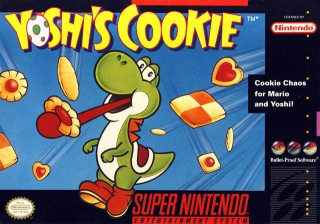
Yoshi's Cookie is a 1992 tile-matching puzzle video game developed by Tose and published by Nintendo for the NES and Game Boy platforms in 1992. A Super NES version was released the following year, developed and published by Bullet-Proof Software.

Wrecking Crew is an action game developed and published by Nintendo. Designed by Yoshio Sakamoto, it was first released as an arcade video game for the Nintendo VS. System in 1984, titled Vs. Wrecking Crew with a simultaneous two-player mode. It was released as a single-player game for the Family Computer (Famicom) console in 1985, and as a launch game for the Nintendo Entertainment System (NES) later that year. A sequel, Wrecking Crew '98, was released in Japan in 1998 for the Super Famicom.

Popeye is a 1982 platform game developed and released by Nintendo as an arcade video game. It is based on the comic strip of the same name created by E. C. Segar and licensed from King Features Syndicate. Some sources claim that Ikegami Tsushinki did programming work on the game. As Popeye, the player must collect hearts thrown by Olive Oyl from the top of the screen while being chased by Bluto. Popeye can punch bottles thrown at him, but can only hurt Bluto after eating the one can of spinach present in each level. Unlike Nintendo's earlier Donkey Kong games, there is no jump button. There are three screens.
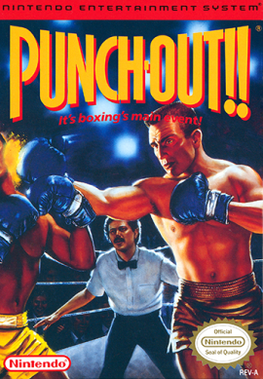
Punch-Out!!, is a 1987 boxing video game developed and published by Nintendo for the Nintendo Entertainment System (NES). Part of the Punch-Out!! series, it is an adaptation of the arcade video games Punch-Out!! (1984) and Super Punch-Out!! (1984). Differences from the arcades include the addition of undisputed world heavyweight champion Mike Tyson as the final boss. It received critical acclaim, and is retrospectively considered one of the greatest video games of all time.

Punch-Out!! is a 1984 arcade boxing video game developed by Nintendo R&D3 and published by Nintendo. It was the inaugural game in the Punch-Out!! series.

Hogan's Alley is a light gun shooter video game developed and published by Nintendo. It was released for the Family Computer in 1984 and then the arcade Nintendo VS. System and Nintendo Entertainment System in 1985. It was one of the first hit video games to use a light gun as an input device, along with Nintendo's Duck Hunt (1984). The game presents players with "cardboard cut-outs" of gangsters and innocent civilians. The player must shoot the gangs and spare the innocent people. It was a major arcade hit in the United States and Europe.
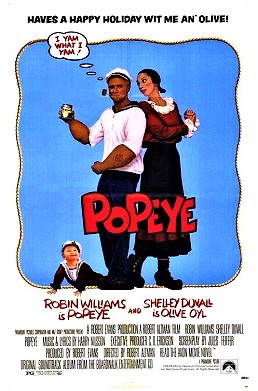
Popeye is a 1980 American musical comedy film directed by Robert Altman and produced by Paramount Pictures and Walt Disney Productions. It is based on E. C. Segar's Popeye comics character. The script was written by Jules Feiffer, and stars Robin Williams as Popeye the Sailor Man and Shelley Duvall as Olive Oyl. Its story follows Popeye's adventures as he arrives in the town of Sweethaven.
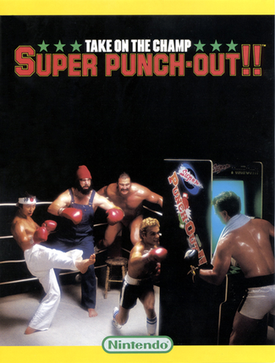
Super Punch-Out!! is a 1984 arcade boxing game by Nintendo. The sequel to Punch-Out!!, it follows the same format while adding several new features and characters. Along with punching, blocking and dodging, players also have the ability to duck. The game also saves and displays the three fastest knockout times, while the game's difficulty is increased.
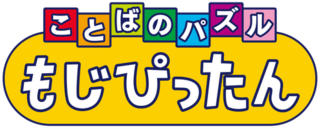
Kotoba no Puzzle: Mojipittan is a series of Japanese word puzzle video games developed and published by Bandai Namco Entertainment, formerly Namco. The series began in arcades with Kotoba no Puzzle: Mojipittan in 2001, and has seen multiple sequels for several platforms, including the Game Boy Advance, PlayStation Portable and Nintendo DS. Gameplay is similar to Scrabble — players are tasked with using Hiragana to form words on a board by placing down pieces marked with Hiragana characters.

Brain Age: Train Your Brain in Minutes a Day!, known as Dr. Kawashima's Brain Training: How Old Is Your Brain? in PAL regions, is an edutainment puzzle video game. It was developed and published by Nintendo for the Nintendo DS. Nintendo has stated that it is an entertainment product inspired by Tohoku University professor Ryuta Kawashima's work in the neurosciences.
Point Blank, known as Gun Bullet, or Gunvari in Japan, is a series of light gun shooter games developed by Namco for the arcade, PlayStation and Nintendo DS; the trilogy was first released in arcade in 1994 and was later ported onto the PlayStation. Point Blank DS was released in 2006 for the Nintendo DS featuring 40 challenges from the original series.
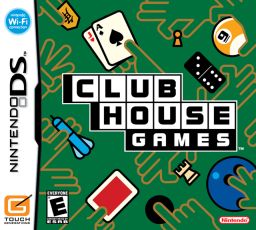
Clubhouse Games, known in some European countries as 42 All-Time Classics and in Japanese as Dare demo Asobi Taizen, is a compilation video game developed by Agenda and published by Nintendo for the Nintendo DS, consisting of board, card, and tabletop games from around the world. It was released in Japan on November 3, 2005, in Europe on September 29, 2006, and in North America and Australia in October.

Bookworm is a word-forming puzzle video game by PopCap Games. From a grid of available letters, players connect letters to form words. As words are formed, they are removed from the grid and the remaining letters collapse to fill the available space. Players earn more points by creating longer words or words which use less common letters and earn less for smaller words. In November 2006, PopCap Games released a sequel, Bookworm Adventures. Bookworm was released for the Nintendo DS digital distribution service DSiWare on November 30, 2009. It has also been released on the regular Nintendo DS cartridge. Bookworm is the most downloaded word puzzle game, being downloaded over 100 million times. The Deluxe version of the game features updated graphics, Action Game, and the Hall of Fame.

Space Firebird is a 1980 arcade video game developed by Nintendo R&D1 and released by Nintendo in Japan and Europe. In America, the game was distributed by Far East Video. Sega-Gremlin also released a version of the game in North America.

The Sea Hag is a fictional character owned by King Features Syndicate. She is a tall, masculine-looking witch featured in comics/cartoons as a nemesis to the character Popeye. The Sea Hag was created by Elzie Crisler Segar in 1929 as part of the Thimble Theatre comic strip.

Popeye the Sailor is a fictional cartoon character created by Elzie Crisler Segar. The character first appeared on January 17, 1929, in the daily King Features comic strip Thimble Theatre. The strip was in its tenth year when Popeye made his debut, but the one-eyed sailor quickly became the lead character, and Thimble Theatre became one of King Features' most popular properties during the 1930s. Following Segar's death in 1938, Thimble Theatre was continued by several writers and artists, most notably Segar's assistant Bud Sagendorf. The strip continues to appear in first-run installments on Sundays, written and drawn by R. K. Milholland. The daily strips are reprints of old Sagendorf stories.

Popeye is a Japan-exclusive Game Boy video game based on the comic strip of same name licensed from King Features Syndicate.

SpellTower is a 2011 word puzzle game developed by Zach Gage. In the game, the player must clear the screen before it overflows by creating words from assorted letter tiles. The game has several game modes and a multiplayer battle mode. The impetus for the game—the concept of combining elements from Tetris and Boggle in what was a prototype of the puzzle video game Puzzlejuice—inspired Gage to create SpellTower. The game was released for iOS in November 2011 to generally favorable reviews. Versions for OS X and Android followed over the next two years. In 2017 SpellTower Minutes was released. This browser-based Flash game created special "blitz" like modes not found in the mobile releases. A new iOS version released in 2017 swapped out the unnamed dictionary and began using Merriam-Webster's Third New International Dictionary, Unabridged. French and Dutch language specific versions were also released. A 2020 release, SpellTower+, added new game modes, cleaner visuals, and a jazz soundtrack.

Touhou Spell Bubble is a rhythm based competitive arcade puzzle game developed in 2020 by Taito as an officially licensed spin-off in the Touhou Project series. The gameplay is similar to that of the Puzzle Bobble series, which Taito also developed. The company has referred to the game as "Puzzle Bobble meets Touhou Project," implying that they consider it to also be a spinoff of both series.















